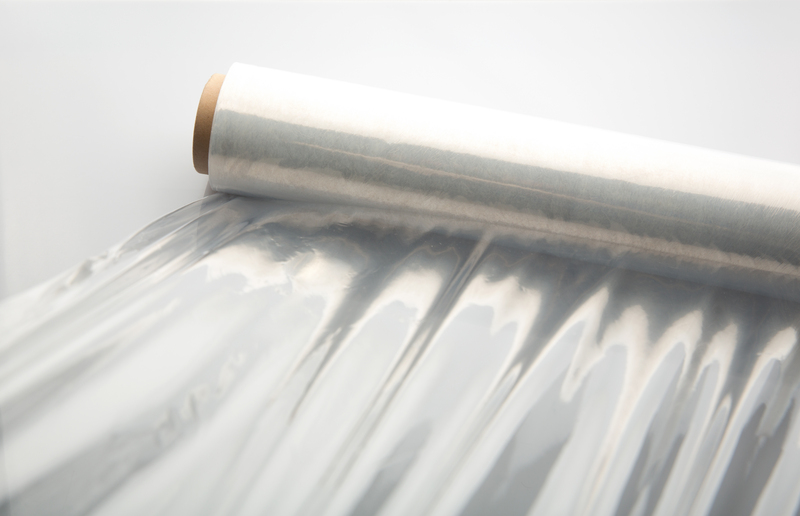Discover How to Minimize Dust and Allergens in Your House
Posted on 21/09/2025
Discover How to Minimize Dust and Allergens in Your House
Living with allergies or respiratory sensitivities can be a challenge--especially at home. Dust and household allergens not only irritate but can also exacerbate chronic conditions like asthma, eczema, and allergic rhinitis. Thankfully, there are practical, science-backed steps you can take to reduce dust and allergens in your house. In this comprehensive guide, you'll discover actionable strategies to transform your home into a healthier, more comfortable haven for you and your loved ones.
Understanding Dust and Indoor Allergens
Before you can effectively minimize dust and allergens in your home, it helps to know what you're up against. Household dust is a complex mixture that may contain skin flakes, hair, fabric fibers, pet dander, dust mites, pollen, mold spores, and even microscopic debris from insects. Many of these compounds are potent allergens, meaning they can trigger allergic reactions in sensitive individuals.
- Dust mites: Tiny, nearly invisible creatures that thrive in warm, humid environments--especially bedding, upholstered furniture, and carpets.
- Pet dander: Microscopic skin flakes shed by cats, dogs, and other animals.
- Mold spores: Airborne particles from indoor or outdoor mold growth, especially prevalent in damp areas.
- Pollen: Plant-produced particles that frequently find their way indoors via open windows, doors, and on shoes or pets.
Knowing these sources is the vital first step toward a cleaner, more allergen-free home.

Why Reducing Dust and Allergens Matters
The benefits of minimizing dust and allergens aren't limited to those with diagnosed allergies or asthma. Everyone in your household stands to gain from purer indoor air, fewer respiratory issues, and an overall fresher home environment. Studies suggest that lowering indoor allergens can promote better sleep, improve focus, and even boost emotional well-being.
Essential Strategies to Minimize Dust and Allergens in Your House
1. Upgrade Your Cleaning Routine
- Dust with damp cloths: Rather than using feather dusters (which simply scatter dust), use a microfiber or damp cloth to trap particles and keep them from becoming airborne.
- Vacuum regularly--using a HEPA filter: HEPA vacuums capture tiny particles, including dust mite debris and pet dander, which ordinary vacuums might miss. Vacuum at least twice weekly, focusing on high-traffic areas, carpets, and rugs.
- Mop hard floors: Wet mopping picks up fine dust missed by vacuums or dry mops.
- Clean walls, baseboards, and ceiling fans: Dust doesn't just settle on floors--pay special attention to high and low surfaces during your routine.
2. Control Climate and Humidity
Dust mites and mold both thrive in moist environments. Keeping your home's humidity between 30% and 50% is key for reducing indoor allergens.
- Use a dehumidifier: Especially in basements, laundry rooms, and bathrooms where humidity levels tend to be higher.
- Fix leaks promptly: Any plumbing leaks or water intrusion should be addressed immediately to prevent mold growth.
- Ventilate: Use exhaust fans in bathrooms and kitchens, or open windows briefly if outdoor pollen counts are low.
Pro Tip: Consider investing in a hygrometer (humidity monitor) to help keep your indoor air at optimal levels.
3. Prioritize the Bedroom
Because we spend at least a third of our lives sleeping, your bedroom should be the primary target for any anti-allergen campaign.
- Encase mattresses and pillows: Use zippered, allergen-proof covers to block dust mites.
- Wash bedding weekly: Use hot water (at least 130?F or 54?C) to kill dust mites.
- Replace pillows every 1-2 years: Even with covers, pillows accumulate dust mite residue over time.
- Avoid heavy drapes and fabric headboards: Instead, use blinds or machine-washable window coverings and choose headboards made of metal or wood.
4. Cut Down on Clutter
Clutter attracts and holds onto dust, making cleaning harder and creating havens for allergens. To minimize dust accumulation:
- Declutter surfaces: Keep shelves, nightstands, and dressers as clear as possible.
- Store items in closed containers: Boxes with lids and closed cupboards are less likely to collect dust than open shelves.
- Organize toys and books: These can be major dust catchers, especially in kid's bedrooms.
5. Upgrade Air Filtration and Purification
Effective air filtration makes a huge difference in your quest to reduce allergens in your home.
- Change HVAC filters regularly: High-quality HEPA or allergen-reducing filters should be replaced every 2-3 months--or sooner during allergy season.
- Install portable air purifiers: These are particularly useful for bedrooms, nurseries, or any high-sensitivity zones.
- Service ventilation systems: Regular maintenance keeps central air and heating systems effectively filtering your air.
6. Ban Smoke and Fragrances Indoors
Cigarette smoke, incense, and aerosol sprays can exacerbate allergies and reduce your home's air quality. Encourage smoking outdoors and opt for natural, unscented cleaning products whenever possible.
7. Manage Pet Dander
If you share your home with furry friends, pet dander is a major source of household allergens. But you don't have to rehome your pets; just adopt some smart routines to minimize allergen buildup:
- Bathe and groom pets regularly: Consult your vet for the best washing schedule. Wipe pets down with a damp cloth when they come in from outdoors.
- Keep pets out of bedrooms: Create allergen-free zones--especially where you sleep.
- Wash pet bedding and toys weekly: Use hot water and avoid using heavy perfumes or fabric softeners.
8. Tackle Upholstered Furniture and Carpets
Soft furnishings trap dust, pollen, and other allergens. Here's how to keep them under control:
- Replace carpets with hard flooring: Bare floors (like tile, wood, or laminate) are much easier to keep dust-free than wall-to-wall carpets.
- Launder area rugs: Choose machine-washable rugs and clean them regularly.
- Deep-clean upholstery and curtains: Steam clean sofas, chairs, and drapes every few months.
- Vacuum furniture and mattresses: Use a vacuum with upholstery attachments weekly.
9. Keep Windows and Doors Sealed
Outdoor allergens--like pollen and mold spores--can easily sneak indoors. To reduce allergen infiltration:
- Keep windows closed: Especially during pollen season or on windy days.
- Seal gaps: Weather-strip windows and doors to prevent outdoor dust from coming in.
- Shoe-free household: Encourage everyone to leave shoes at the entryway to prevent tracking in outdoor allergens.
10. Regularly Maintain and Inspect Your Home
Consistent home maintenance is an often-overlooked strategy for allergen control. Pay attention to the following:
- Clean air ducts yearly: Especially if you have an HVAC system, as ducts can accumulate significant dust.
- Inspect for mold: Look behind appliances, inside cabinets, in attics and basements--address any moisture issues promptly.
- Monitor attic and crawl spaces: These should be dry and well-ventilated to prevent unseen mold growth.
Bonus Tips for Allergy-Proof Living
Ready to go the extra mile in your quest to minimize dust and allergens in your house? Consider these advanced steps:
- Use allergen-blocking window screens: Special screens can trap pollen and fine dust before it enters your home.
- Opt for low-pile and allergy-friendly fabrics: Choose materials that hold less dust for bedding and upholstery.
- Limit indoor plants: While plants can improve air quality, mold can sometimes thrive in their soil. If you love greenery, consider hypoallergenic varieties and keep soil dry.
- Wash curtains and blinds monthly: Even window treatments need attention in homes where allergies are a concern.
- Consider professional cleaning: Occasional deep cleaning by professionals can address hard-to-reach dust and allergen buildup.
DIY and Natural Remedies to Reduce Allergens
While modern cleaning products and air purifiers are effective, you can also harness simple DIY solutions to combat dust and allergens:
- Baking soda on carpets: Sprinkle, let sit for 30 minutes, then vacuum for a homemade deodorizing and dust-busting boost.
- Vinegar for mold: Clean hard surfaces with a 1:1 vinegar-water solution to kill mold spores.
- Lemon juice for freshening air: Natural and non-toxic, lemon juice can neutralize musty odors (though not a substitute for dust removal).
What to Avoid: Common Dust and Allergen Mistakes
Sometimes, well-intentioned habits can actually make allergies worse. Avoid these common pitfalls:
- Using feather or dry dusters: They just stir up dust instead of removing it.
- Overwatering plants: Soggy soil breeds mold and mildew.
- Ignoring air filters: A clogged filter won't trap allergens effectively.
- Letting laundry pile up: Dirty clothes (especially towels) can harbor dust mites and mold.

When to Seek Professional Help
If, despite your best efforts, indoor allergies remain unmanageable, it may be time to consult an allergy specialist. Sometimes, severe or persistent problems stem from issues like hidden black mold, high humidity, or structural leaks. Professional indoor air quality assessments and remediation services can pinpoint and address stubborn sources of allergen exposure.
Conclusion: Breathe Easier with a Low-Allergen Home
You don't have to resign yourself to sneezing, itchy eyes, or nighttime coughing at home. By adopting these comprehensive methods to minimize dust and allergens in your house, you'll support healthier air, better sleep, and improved quality of life for everyone in your family. Start small, stay consistent, and over time your house will not only look and feel cleaner--it will actually be healthier, too!
For more tips and expert advice on creating a cleaner, more allergy-friendly home environment, bookmark this article and share it with friends or family members who face similar challenges. Together, you can ensure that your house truly is a safe haven--from dust, dander, and all unwanted irritants.




